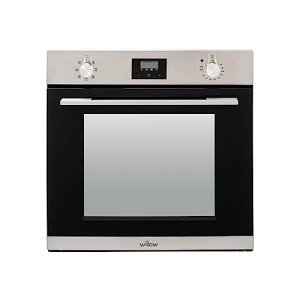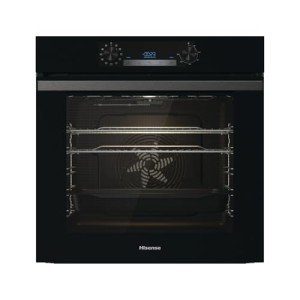Ten Built In Electric Ovens That Really Change Your Life
페이지 정보

본문
The Comprehensive Guide to Built-in Electric Ovens and Hobs
In today's fast-paced world, modern-day kitchen appliances have actually progressed drastically to accommodate the tastes and needs of modern property owners. Among these appliances, built-in electric integrated ovens and hobs stand out for their efficiency, style, and performance. This article checks out the functions, benefits, setup ideas, and upkeep of built-in built oven electric ovens and hobs, together with dealing with regularly asked concerns.
Comprehending Built-in Electric Ovens
What Is a Built-in Electric Oven?
A built-in electric oven is a home appliance designed to be set up into a wall or kitchen cabinetry, offering a smooth, integrated oven appearance in built oven the kitchen. Unlike freestanding ovens, built-in designs save space and typically come geared up with extra features such as self-cleaning cycles, convection cooking, and different cooking modes.
Kinds Of Built-in Electric Ovens
- Single Ovens: Ideal for smaller kitchen areas or those who prepare for less individuals.
- Double Ovens: Offer more cooking area, appropriate for bigger households or those who amuse often.
- Mix Ovens: These include both a standard oven and a microwave, supplying flexible cooking options.
Advantages of Built-in Electric Ovens
| Advantage | Description |
|---|---|
| Space-Saving Design | Fits flawlessly into cabinetry, releasing up counter space. |
| Improved Aesthetics | Develops a contemporary, professional kitchen appearance. |
| Versatile Cooking Options | Often includes numerous cooking modes including bake, broil, and convection. |
| Energy Efficient | Takes in less energy than standard ovens. |
Understanding Built-in Hobs
What Is a Built-in Hob?
A built-in hob is a cooking surface set up into the kitchen counter top, integrating flawlessly with the kitchen style. Available in electric, induction, and gas varieties, electric hobs are renowned for their precision and Built In Electric Ovens ease of use.
Types of Built-in Hobs
- Electric Hobs: Traditional coil elements that heat through electrical resistance.
- Induction Hobs: Use magnetic energy to heat only the pots and pans, making them much faster and more secure.
- Ceramic Hobs: Feature a smooth surface area with convected heat beneath, providing simple cleaning.
Advantages of Built-in Hobs
| Benefit | Description |
|---|---|
| Fast Cooking Times | Electric hobs heat rapidly, reducing overall cooking time. |
| Easy to Clean | Flat surface permits for quick and uncomplicated cleaning. |
| Durable | Traditionally built to last and hold up against heats. |
| Versatile Compatibility | Functions well with different pots and pans products. |
Installation Considerations
Setting up a built-in electric oven and hob needs mindful preparation.

Steps for Installation
- Procedure the Space: Ensure the dimensions of the oven and hob match the assigned area in your kitchen.
- Check Electrical Requirements: Consult an electrician to make sure wiring can deal with the home appliance's power needs.
- Placement of Appliances: Position the oven at a hassle-free height, typically in between waist and eye level.
- Ventilation: Ensure appropriate ventilation, especially if your oven incorporates a range hood.
Vital Tools
- Power drill
- Screwdrivers
- Level
- Measuring tape
Safety Precautions
- Always detach the power before setup.
- Follow manufacturer instructions carefully.
- Think about working with an expert for electrical connections.
Upkeep Tips
Preserving built-in electric ovens and hobs is essential for longevity and performance.
Regular Care Routine
- Cleaning up the Surface: Use a soft cloth and manufacturer-recommended cleaner.
- Examining Electrical Connections: Check cables and plug for damages periodically.
- Cleaning up Filters: If the oven has a ventilator, clean or change the filters as needed.
Troubleshooting Common Issues
| Problem | Possible Solution |
|---|---|
| Oven Won't Heat | Check the power supply and heating component. |
| Heating Inconsistency | Examine the thermostat and integrated oven and grill calibration. |
| Hob Not Heating | Make sure pots and pans works and check the power supply. |
Frequently Asked Questions
1. How do I choose the best size Built in Electric ovens-in electric oven?
Selecting the best size involves determining your kitchen area and considering how much cooking you usually do. If you amuse frequently or have a large family, Built In Electric ovens select a double oven.
2. Are built-in electric hobs safe to use?
Yes, built-in electric hobs are safe, particularly induction hobs which just warm the pots and pans, lowering the risk of burns.
3. Can I install a built-in oven and hob myself?
While it is possible for knowledgeable DIY lovers, hiring an expert is recommended, especially for the electrical connections.
4. How typically should I clean my built-in oven and hob?
Cleaning should be done frequently after usage, with deep cleansing intervals depending on cooking frequency - normally every couple of months.
5. Do built-in appliances need unique maintenance?
Built-in appliances need similar maintenance to freestanding designs, but proper care needs to be taken with their surrounding kitchen cabinetry.

Built-in electric ovens and hobs provide a blend of technology and style, using performance and contemporary aesthetics to any kitchen. With proper selection, cautious setup, and routine upkeep, these appliances can boost one's cooking experience for several years. Comprehending the features, benefits, and care requirements can empower house owners to create the kitchen of their dreams-- efficiently and stylishly.
As kitchens continue to evolve into main hubs of the home, picking the right built-in solutions plays an essential role in daily cooking creativity and enjoyment.
- 이전글5 Killer Quora Answers On Robot Vacuum Cleaner Uk 25.05.20
- 다음글Treadmill At Home Explained In Fewer Than 140 Characters 25.05.20
댓글목록
등록된 댓글이 없습니다.



